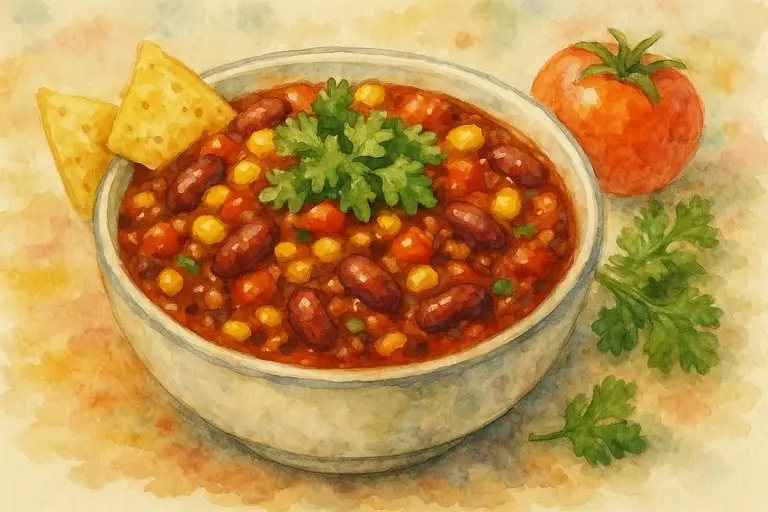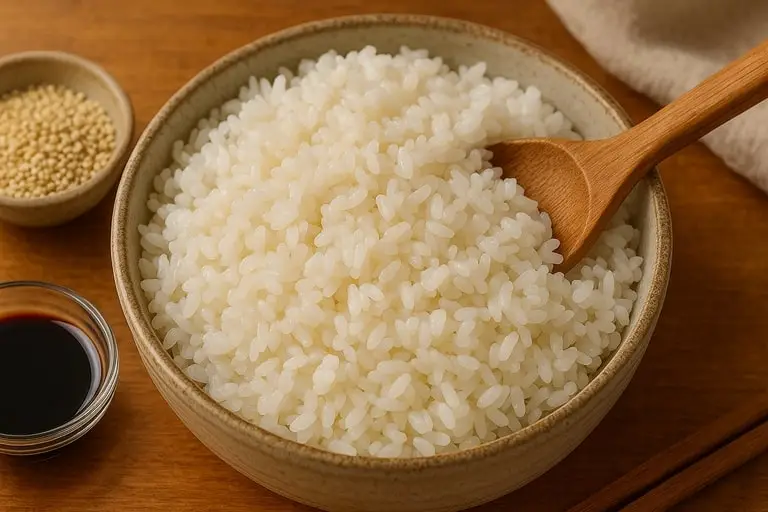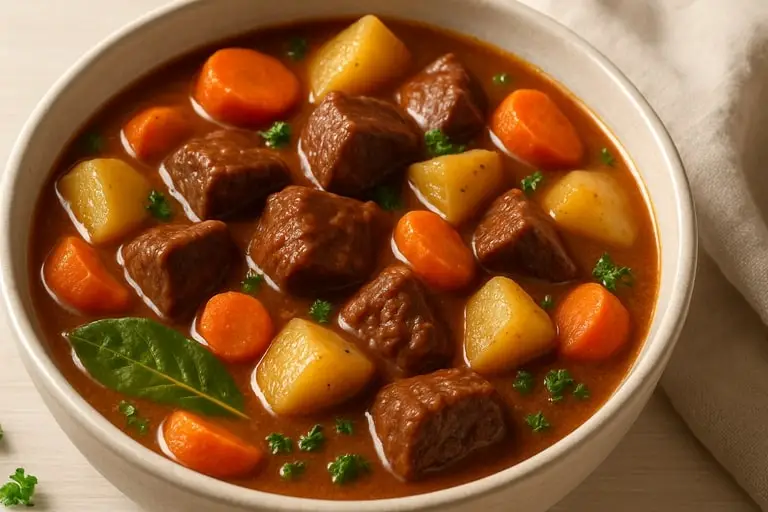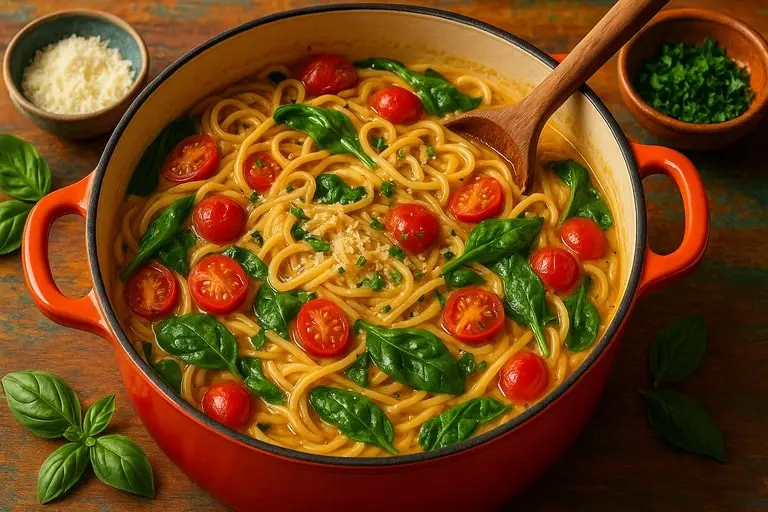The chili recipe stands as one of the most celebrated comfort foods, recognized for its robust flavors, adaptability, and cultural significance. While chili may conjure images of steaming bowls filled with beans, meat, and spice, its origins and interpretations vary across regions, each with passionate advocates claiming authenticity. At its heart, chili represents a dish born of resourcefulness, enriched by cultural exchange, and elevated by creativity. More than sustenance, chili symbolizes heritage, comfort, and adaptability, earning its place as a cornerstone of culinary traditions worldwide.
The roots of chili trace back to early Spanish and Mexican influences, blending indigenous ingredients like chili peppers with European-introduced meats. The dish gained popularity in the American Southwest, particularly in Texas, where “chili con carne” became iconic. This traditional form emphasized beef, chili peppers, and spices, often excluding beans, sparking debates that persist today. From Tex-Mex to Midwestern bean-rich variations, chili exemplifies how recipes evolve to reflect geography, culture, and preference.
Central to any chili recipe are its seasonings. Chili peppers, whether fresh, dried, or powdered, provide signature heat and depth. Combinations of cumin, garlic, oregano, and paprika build complexity, creating layers of flavor that range from smoky to fiery. These spices define chili’s identity, ensuring boldness in every bite. Yet balance remains crucial—heat without harmony risks overwhelming, while restrained seasoning yields blandness. True mastery lies in calibrating intensity with nuance.
Protein selection shapes character. Beef remains classic, whether ground or cubed, but chicken, turkey, pork, or even plant-based alternatives adapt seamlessly. Beans, depending on regional preference, contribute body, fiber, and heartiness, transforming chili into complete meal. The versatility of ingredients demonstrates chili’s inclusivity, where no single formula dominates but all iterations share identity as robust, spiced stews.
The base liquid further influences outcome. Tomatoes and stock provide depth, while beer or coffee introduce richness and complexity. Long simmering melds flavors, breaking down tough cuts of meat into tenderness and allowing spices to penetrate deeply. Time, as much as ingredients, defines chili’s success, emphasizing patience as cornerstone of tradition.
Culturally, chili carries symbolic weight. In Texas, it embodies pride and identity, celebrated through cook-offs and festivals. In Mexico, regional variations highlight local peppers and traditions, connecting food with heritage. Across the United States and beyond, chili appears at gatherings, football games, and community events, symbolizing togetherness and warmth. Its adaptability ensures presence at both casual tables and competitive arenas, reinforcing its dual role as everyday dish and cultural emblem.
The sensory experience of chili amplifies its allure. Its aroma of simmering spices fills kitchens with anticipation, while its vibrant red hues and thick texture appeal visually. The first spoonful delivers warmth, spice, and depth that linger, comforting both body and spirit. These sensory elements ensure that chili transcends sustenance, embedding itself in memory and tradition.
From a nutritional standpoint, chili balances indulgence with wholesomeness. Protein-rich meats or legumes combine with vegetables and spices to provide both satisfaction and nourishment. Health-conscious adaptations—lean meats, extra vegetables, or reduced sodium—demonstrate that chili can be tailored to align with diverse dietary goals without losing essence.
Professional kitchens elevate chili through refinement. Chefs experiment with artisanal chilies, smoked meats, or global spices, transforming rustic origins into sophisticated interpretations. Yet even in fine dining, chili retains identity as comfort food, proving its versatility across culinary contexts.
Ultimately, the chili recipe represents more than cooking instructions—it embodies resilience, creativity, and tradition. Its enduring popularity arises from its adaptability, cultural resonance, and ability to comfort. Whether fiery or mild, meaty or vegetarian, chili endures as a dish that unites people through flavor, history, and care.
Homemade Chili and Recipe Mastery
Mastering homemade chili requires attentiveness to detail and understanding of how ingredients interact over time. While recipes abound, the principles of layering flavor, balancing heat, and managing texture remain consistent. Recipe mastery transforms chili from simple stew into expression of skill and individuality.
The foundation of homemade chili begins with searing. Browning meat creates the Maillard reaction, generating depth that simmering alone cannot achieve. This initial step forms the backbone of flavor, with browned bits deglazed by liquid to enrich broth. Even vegetarian versions benefit from sautéing onions, garlic, and peppers until caramelized, building complexity before liquid is introduced.
Spice layering distinguishes mastery. Adding chili powder early integrates flavor into broth, while reserving some for later preserves brightness. Fresh chilies bring sharp heat, dried varieties add smokiness, and ground spices contribute body. Balancing these elements ensures multidimensional flavor. Over-seasoning risks monotony, while under-seasoning leaves dish flat; mastery lies in balance.
The choice of beans, when included, affects texture. Kidney beans provide firmness, pinto beans offer creaminess, and black beans contribute earthiness. Cooking them within stew allows them to absorb seasoning, while pre-cooked beans reduce preparation time. Decisions about beans reflect both tradition and adaptation, proving that chili’s identity accommodates diversity.
Simmering time determines cohesion. Low, slow cooking melds flavors, softens meat, and thickens consistency. Rushing risks toughness and underdeveloped flavor. Many cooks find chili improves after resting overnight, as flavors integrate further. This phenomenon reinforces the principle that patience elevates results.
Acidity plays critical role in balance. Tomatoes provide brightness, cutting richness of meat, while vinegar or lime juice sharpen flavors near the end. Without acidity, chili risks heaviness; with it, flavors achieve harmony. Mastery involves knowing when to add acidity to maximize freshness and contrast.
Texture refinement distinguishes amateur from expert. Stirring occasionally prevents sticking, while allowing enough evaporation ensures thickness. Adjustments with masa harina, cornstarch, or pureed beans thicken further if needed. These details, though subtle, determine satisfaction, ensuring chili feels hearty without becoming heavy.
Modern adaptations expand homemade chili’s scope. Plant-based proteins, global spices like curry or harissa, or alternative bases such as pumpkin create new expressions. Each variation honors chili’s essence while reflecting evolving tastes. Recipe mastery thus includes creativity, proving that authenticity lies in spirit rather than rigid formula.
Professional kitchens approach chili with both reverence and innovation. Chefs replicate classic versions with precision while experimenting with artisanal ingredients. Their mastery lies in consistency—delivering robust flavor bowl after bowl—while distinguishing their recipe through signature touches. For home cooks, mastery arises from practice, learning how personal preference interacts with timeless principles.
Psychologically, homemade chili symbolizes care. Preparing it requires time and attention, signaling investment in those who will share it. Its warmth and spice provide comfort, reinforcing connection between cook and diners. Recipes thus transcend instructions, becoming rituals of generosity and community.
Ultimately, homemade chili and recipe mastery reveal that success arises from detail, patience, and respect for tradition. Each bowl represents not only flavor but also continuity, linking kitchens across time and place through shared pursuit of comfort and excellence.
Chili Recipe and Everyday Comfort
The chili recipe resonates most deeply as everyday comfort food, embodying warmth, nourishment, and togetherness. Beyond its robust flavor, chili sustains cultural traditions and daily routines, offering solace in both ordinary and extraordinary circumstances. Its role as comfort food confirms that the simplest dishes often carry the most profound meaning.
The aroma of chili simmering defines comfort. Spices mingling with meat and vegetables create scents that fill homes, signaling nourishment and care. The slow-cooking process itself provides reassurance, where anticipation builds alongside flavor. Comfort arises not only from eating but from the ritual of preparation and waiting.
Chili often anchors gatherings. Shared at family dinners, community cook-offs, or casual football parties, it represents generosity and inclusivity. Its abundance encourages sharing, while its adaptability ensures everyone finds version they enjoy. This communal quality amplifies chili’s role as comfort food, reinforcing bonds across tables.
In daily life, chili offers practicality. Prepared in large batches, it provides meals for several days, with flavors improving upon reheating. This efficiency sustains households, proving that comfort food can also align with convenience. Leftovers reheated for lunch or dinner extend not only nourishment but also continuity of comfort.
Culturally, chili embodies resilience. Born from resourcefulness, it transforms inexpensive cuts and pantry staples into robust meals. Its adaptability across climates and regions reflects human creativity in sustaining families through hardship. Chili thus symbolizes survival as much as indulgence, grounding comfort in heritage.
Psychologically, chili provides reassurance during uncertainty. Its warmth, spice, and heartiness soothe, while its familiarity evokes memories of gatherings, traditions, or childhood kitchens. In moments of stress, a bowl of chili anchors individuals, proving that comfort arises as much from memory as from flavor.
Modern lifestyles enhance chili’s relevance. Slow cookers and pressure cookers simplify preparation, integrating tradition into busy schedules. Even instant versions evoke comfort, though traditional simmering remains preferred. This adaptability ensures chili’s survival in evolving contexts, sustaining its role as everyday staple.
Nutritionally, chili provides balance. Proteins, beans, vegetables, and spices converge to create dish that is hearty yet wholesome. Adjustments accommodate diverse diets—lean meats, vegetarian substitutions, or reduced sodium versions—proving that comfort can coexist with health. This versatility affirms chili’s enduring place in kitchens.
Professional kitchens embrace chili’s comfort by refining it into restaurant-worthy fare without stripping authenticity. Whether presented rustically or elegantly, chili retains its identity, affirming that comfort lies in essence rather than presentation. Its ability to satisfy across settings highlights its universal resonance.
Ultimately, the chili recipe defines everyday comfort by blending tradition, nourishment, and connection. Its flavors comfort body, its rituals soothe spirit, and its communal role sustains culture. In every simmering pot, chili affirms its timeless role as dish that transcends sustenance, embodying memory, resilience, and warmth.
Homemade chili is one of those dishes that embodies warmth, comfort, and individuality, a recipe that feels as personal as it does communal. Unlike foods that require strict adherence to tradition, chili thrives on flexibility, allowing each cook to adapt it according to taste, family history, and available ingredients. It is often simmered slowly, filling the kitchen with rich aromas that signal not only nourishment but also patience and care. A pot of chili carries with it the spirit of gatherings, of shared tables and conversations, reminding us that food is as much about connection as it is about sustenance.
The origins of chili trace back to the American Southwest, particularly Texas, where indigenous practices, Spanish influences, and frontier resourcefulness converged. Early versions featured dried chilies, meat, and local herbs, often prepared by communities who needed hearty, sustaining meals from simple resources.
Over time, the dish spread and evolved, absorbing regional ingredients and preferences. Some insisted on pure meat-based recipes, while others added beans, tomatoes, or vegetables, sparking debates that continue to this day. These arguments themselves illustrate the cultural weight of chili — it is not just food but an emblem of identity and pride, one that inspires loyalty and passion across generations.
At the heart of homemade chili is the choice of ingredients, each shaping the dish’s personality. Meat provides depth and substance, whether ground beef, cubed pork, turkey, or even game meats like venison. Vegetables add balance and texture, with onions, garlic, peppers, and tomatoes forming the backbone of many versions. Spices, of course, define chili more than anything else: ground cumin, chili powder, paprika, oregano, and cayenne pepper are blended in endless combinations, creating layers of flavor that unfold with each bite. The interplay of these elements transforms a pot of chili into a reflection of the cook’s taste and imagination.
The cooking process itself is integral to the character of chili. While the ingredients may be humble, time is the secret ingredient that turns them into something extraordinary. As the pot simmers, flavors meld, proteins tenderize, and spices deepen. The dish rewards patience, growing more complex with every passing hour. Some cooks swear by preparing chili a day ahead, allowing it to rest overnight so that flavors can fully develop. This patience mirrors the values chili embodies: comfort, tradition, and the idea that good things come to those willing to wait.
Texture is another element that distinguishes one version of chili from another. Some prefer a thick, hearty stew where every spoonful is dense with meat and beans, while others seek a lighter consistency that emphasizes broth and spices. The balance between smoothness and chunkiness depends on preparation methods, such as whether beans are mashed into the base or left whole, whether the sauce is reduced until concentrated or allowed to remain loose and soupy. These variations reflect the deeply personal nature of chili: no two pots are ever exactly alike, and each one tells a story of the cook’s preferences and techniques.
Culturally, homemade chili carries immense significance. In the United States, chili cook-offs are not just competitions but celebrations of community, where neighbors, friends, and families gather to showcase their recipes and taste others. These events affirm the dish’s role as more than nourishment; they are about pride, tradition, and camaraderie. Beyond competitions, chili serves as a staple at tailgates, potlucks, and family dinners, linking it to moments of joy and togetherness. Its presence in these contexts reinforces its status as a cultural icon, a dish that transcends individual kitchens to become part of shared identity.
Globally, chili has inspired adaptations that blend local flavors with its core principles. In Mexico, where the use of chilies is foundational, stews and salsas influenced the creation of chili as known in the United States. In other countries, cooks integrate local spices, legumes, or meats, creating unique variations that reflect their regions. Vegetarian and vegan versions highlight beans, lentils, and vegetables, proving that chili can thrive without meat while still delivering richness and depth. These adaptations demonstrate its universality, a dish both rooted in history and open to reinvention.
Nutritionally, chili provides balance and flexibility. Protein-rich meats or beans form a strong base, while vegetables supply vitamins and fiber. The spices themselves often carry health benefits, from aiding digestion to boosting metabolism.
Depending on how it is prepared, chili can be indulgent and hearty or lean and wholesome. Its adaptability makes it suitable for different lifestyles, whether someone seeks a filling meal after a long day or a lighter, plant-based version aligned with health goals. In this sense, chili transcends indulgence, offering both comfort and nutrition.
Psychologically, few dishes carry the same emotional weight as homemade chili. The act of preparing it, from chopping vegetables to stirring the pot, creates a rhythm that feels meditative and grounding. The aromas that fill the home build anticipation, turning cooking into an experience of comfort long before the first bite.
Sharing chili multiplies this effect, as the cook receives satisfaction from nourishing others while diners enjoy the warmth of both food and companionship. This emotional dimension explains why chili is often associated with family, love, and care, embedding it deeply into memory and tradition.
Economically, chili reflects practicality as much as indulgence. Its origins lie in stretching resources, turning inexpensive ingredients into meals that could feed many. Even today, a pot of chili can be prepared affordably while still feeling abundant and generous.
Leftovers are easily repurposed into nachos, burritos, or stuffed vegetables, ensuring nothing goes to waste. This practicality aligns with its cultural values: chili is a dish of resourcefulness, one that makes the most of what is available while delivering flavor and satisfaction far beyond its cost.
Modern culinary culture continues to elevate chili, with chefs and home cooks experimenting with new twists on the classic. Some introduce craft beers, chocolates, or coffee to deepen flavors, while others experiment with exotic chilies or smoked spices to add unique notes.
These innovations do not diminish the dish’s essence but rather enrich it, proving that chili can continue to evolve without losing its heart. Whether served in a rustic bowl at home or presented with flair in a restaurant, chili remains unmistakable, instantly recognizable by its aroma, color, and character.
Ultimately, homemade chili endures because it is more than the sum of its ingredients. It is a dish that reflects individuality while creating community, one that sustains the body while comforting the spirit.
Each pot is unique, yet every version resonates with the same warmth, generosity, and satisfaction. Its history ties it to resilience and resourcefulness, while its present affirms its place as a global comfort food. To make chili at home is to engage in a ritual that connects past and present, tradition and innovation, self and community. In every spoonful lies the story of care, creativity, and the enduring power of food to bring people together.
The tradition of slow-simmered dishes filled with robust seasonings has existed for centuries, appearing in kitchens across continents as a way to transform simple ingredients into something memorable. These meals often rely on extended cooking times that allow flavors to merge, vegetables to soften, and meats to become tender, creating harmony in a single pot.
They are deeply associated with warmth, comfort, and sustenance, carrying with them the memory of family tables, rural gatherings, and cultural celebrations. Each version tells a story not only of ingredients but also of the people and regions that crafted them, revealing how food becomes identity.
Historically, these richly seasoned one-pot meals were born out of practicality. Families needed to stretch ingredients, using what was available to feed large households, while cooks sought ways to preserve and enhance flavor through spices and herbs. Over time, what began as subsistence cooking evolved into cherished traditions, with recipes passed down and perfected across generations. These dishes became staples at festivals, rituals, and communal gatherings, embodying resilience and creativity. The diversity of flavors mirrored the trade routes that brought spices, peppers, and aromatics from one land to another, weaving them into local cuisines.
The foundation of these dishes is almost always a careful layering of aromatics. Onions, garlic, peppers, and herbs are sautéed until fragrant, releasing oils that form the base. Liquids such as broth, wine, or even coconut milk are then added, infusing the pot with richness and depth. Meats or legumes contribute protein and heartiness, while vegetables provide balance and texture. The slow simmer ensures that every component interacts, creating a unified flavor rather than a collection of separate notes. This process rewards patience, turning humble beginnings into extraordinary results.
Texture is one of the defining qualities of these meals. Long cooking times allow meat to fall apart with the touch of a fork, beans to soften until creamy, and vegetables to melt into sauces that thicken naturally. Unlike quick dishes where ingredients remain distinct, here they merge, forming something greater than the sum of parts. The mouthfeel becomes as important as taste, with each spoonful offering comfort and satisfaction. It is this ability to transform structure through time that makes these preparations so beloved and enduring.
Culturally, seasoned stews appear in nearly every cuisine. In West Africa, long-simmered dishes use chilies, tomatoes, and groundnuts for depth. In Latin America, peppers and spices create vibrant bowls of nourishment. In Europe, paprika, wine, and herbs enrich rustic pots that have sustained families for centuries. In Asia, ginger, garlic, and fermented sauces build layers of intensity. Each culture interprets the concept differently, yet all share the same principle: slow cooking and bold seasoning create food that is greater than fuel; it is memory, celebration, and identity.
The sensory experience of eating such a dish is unforgettable. The aromas waft through homes long before the pot is opened, building anticipation and warmth. The visual beauty of rich colors — deep reds, golden browns, vibrant greens — delights the eye, while the steam rising from the bowl offers comfort before the first bite.
The taste combines complexity and familiarity, with spices adding heat, sweetness, smokiness, or bitterness depending on their mix. This layering ensures that every spoonful is slightly different yet always satisfying, a journey of flavor contained within a single bowl.
Beyond flavor, these meals carry emotional weight. They are often the food of childhood, remembered from family kitchens and gatherings. They signify care, as preparing them requires time and attention, acts of love that cannot be rushed. Eating them brings comfort not only to the body but also to the spirit, grounding individuals in tradition and memory. In many cultures, to serve such a dish is to honor guests, offering hospitality that goes beyond formality to embody warmth and generosity.
From a nutritional perspective, these preparations can be balanced and wholesome. Beans, vegetables, and lean proteins provide nourishment, while spices themselves often carry health benefits, aiding digestion and circulation. The slow cooking preserves and enhances nutrients, making the final meal as restorative as it is delicious. This balance explains why such dishes have persisted for centuries: they align pleasure with sustenance, indulgence with practicality. They are foods that satisfy hunger while also supporting well-being.
Economically, they reflect resourcefulness. By using less expensive cuts of meat, dried legumes, and seasonal vegetables, families created abundant meals at low cost. Leftovers often taste even better the next day, stretching the value further and reducing waste. This practicality, combined with extraordinary flavor, explains why such dishes remain beloved across social classes and communities. They demonstrate how creativity and patience can transform modest ingredients into meals fit for both everyday life and celebration.
Modern gastronomy has reinterpreted these traditions, bringing them into fine dining while maintaining their rustic soul. Chefs experiment with new spice blends, exotic ingredients, or innovative presentations, but the core principles remain: slow cooking, depth of flavor, and harmony of components.
Meanwhile, home cooks continue to rely on them as symbols of comfort, especially in colder months or times of stress. Technology, from pressure cookers to slow cookers, has made the process more convenient without compromising the essence, ensuring their place in contemporary kitchens.
Psychologically, these meals provide stability and comfort in uncertain times. The act of preparing them — chopping, stirring, tasting — creates rhythm and structure, while the long simmering builds anticipation and a sense of security.
Sharing them reinforces bonds, as bowls passed across the table carry more than flavor; they carry care, tradition, and continuity. In moments of solitude, a bowl can feel like companionship, offering reassurance that one is not alone. This emotional resonance explains their power to comfort far beyond nutrition.
Ultimately, these seasoned, slow-simmered stews endure because they embody values that transcend cuisine: patience, generosity, adaptability, and connection. They are dishes that nourish body and soul, telling stories of history, geography, and identity with every spoonful.
They prove that food can be both simple and profound, rooted in necessity yet elevated into art. To prepare and share them is to participate in a tradition that spans centuries and continents, affirming that some of the greatest joys in life are found in a single pot of food crafted with care and time.
There are meals that go beyond the function of feeding the body and enter the realm of nourishment for the spirit. These are the kinds of foods that carry weight, depth, and satisfaction, filling both stomach and soul with comfort. They are often associated with gatherings, traditions, and moments when people seek not only energy but reassurance. Such preparations usually bring together robust flavors, long cooking times, and an emphasis on abundance. They are not delicate or fleeting but enduring, a reminder that food can provide strength as well as pleasure.
Historically, these meals have roots in necessity. Communities working long hours in fields, factories, or on the land required sustenance that was both affordable and sustaining. Grains, legumes, root vegetables, and less expensive cuts of meat became staples, transformed by time and creativity into dishes of substance.
What began as practical solutions to hunger became cornerstones of culture, refined over generations until they were no longer just survival food but celebrated icons. Their persistence speaks to how deeply they resonate with human needs, balancing economy with indulgence.
The preparation of such meals often involves patience. Unlike quick cooking that emphasizes immediacy, these dishes reward slow simmering, braising, or roasting. The extended time allows flavors to meld, textures to soften, and aromas to bloom. The kitchen becomes infused with anticipation, the scent of garlic, herbs, or spices hanging in the air for hours before the food is ready. Eating them is the culmination of a process that values ritual and mindfulness, reminding us that the best results cannot always be rushed.
Culturally, these foods are inseparable from gatherings. They appear at family tables, communal celebrations, and festivals, served in large pots, trays, or platters meant to be shared. They signify generosity, abundance, and care, inviting everyone to partake. Their presence communicates welcome and belonging, reinforcing bonds between people. In many traditions, cooking and serving such meals is an act of love, a way to honor guests or to celebrate milestones. The act of sharing magnifies the satisfaction, ensuring that what fills the body also fills the heart.
The sensory qualities of these dishes are profound. Rich, savory aromas stimulate appetite long before eating begins. The textures, whether tender meat that falls apart at the touch of a fork, grains that have absorbed the essence of broth, or vegetables that melt into sauce, create satisfaction in every bite.
Flavors are bold and layered, not subtle or fleeting. Spices, herbs, and sauces weave complexity into what might seem at first to be simple ingredients. This richness ensures that the experience is remembered not only for taste but also for the feelings it evokes.
Nutritionally, such meals often provide balance and completeness. They combine proteins, carbohydrates, and vegetables in one pot or plate, making them both practical and fulfilling. Their abundance of fiber, vitamins, and minerals often comes naturally, the result of combining diverse ingredients. While some versions can be indulgent, with creamy sauces or rich meats, others lean toward wholesomeness, with legumes, grains, and seasonal produce at their core. This flexibility ensures they adapt easily to different health goals and dietary needs, proving that sustenance and enjoyment need not be at odds.
Economically, these foods are grounded in wisdom. By using what is available and making the most of inexpensive ingredients, families throughout history were able to stretch resources without sacrificing satisfaction.
Leftovers were not waste but opportunities, often tasting even better the next day after flavors deepened overnight. This approach not only reduced waste but also reinforced the idea of respecting food, valuing every portion and transforming modest beginnings into abundance. Such practicality is part of their enduring legacy.
Modern interpretations of these traditional meals show their adaptability. Chefs in fine dining reimagine them with premium ingredients and artistic presentations, elevating them to gourmet status. At the same time, home cooks and street vendors continue to serve them in their most authentic, rustic forms. Both approaches demonstrate their resilience: whether humble or sophisticated, they remain relevant. Global influences also inspire new variations, combining spices and techniques from different cultures, proving that their essence transcends borders.
Psychologically, these dishes provide a sense of grounding. In uncertain times, people often turn to the foods they associate with comfort and stability. Preparing and eating them brings reassurance, offering both warmth and familiarity. They remind us of childhood, of family kitchens, of times when food symbolized safety and care. Even when eaten alone, such meals evoke the presence of others, carrying emotional resonance that few other foods can achieve. They affirm that nourishment is not just physical but also emotional.
The rituals surrounding these foods also deepen their meaning. The act of slowly stirring a pot, basting a roast, or layering ingredients becomes a meditation, connecting the cook to traditions passed down through generations. Serving them often involves ceremony, whether carving at the table, lifting a lid to reveal steam, or ladling portions to guests. These rituals reinforce the idea that food is not only for eating but also for experiencing, for sharing, and for remembering.
Globally, nearly every culture has its own version of these sustaining meals. From European casseroles and roasts to African stews, from Asian rice-based feasts to Latin American braised dishes, the theme recurs with striking consistency. This universality demonstrates that across geography and time, human beings have sought the same qualities in food: nourishment, comfort, and satisfaction. It is a testament to the shared values of humanity, reflected through flavors and traditions that may look different but feel the same.
Ultimately, these kinds of meals endure because they fulfill fundamental human desires: to be nourished, to be comforted, and to feel connected. They embody patience in preparation, generosity in sharing, and satisfaction in consumption. They remind us that food is more than fuel — it is memory, ritual, and culture served on a plate. In a world that often emphasizes speed and efficiency, these dishes stand as proof that taking time, showing care, and savoring abundance still hold irreplaceable power. They will continue to unite people, sustain communities, and inspire cooks for generations to come.












